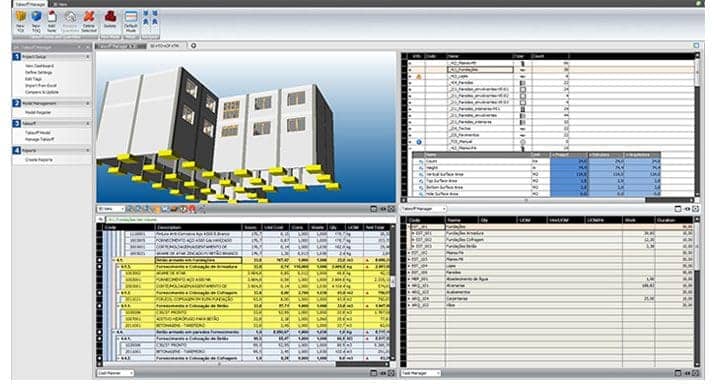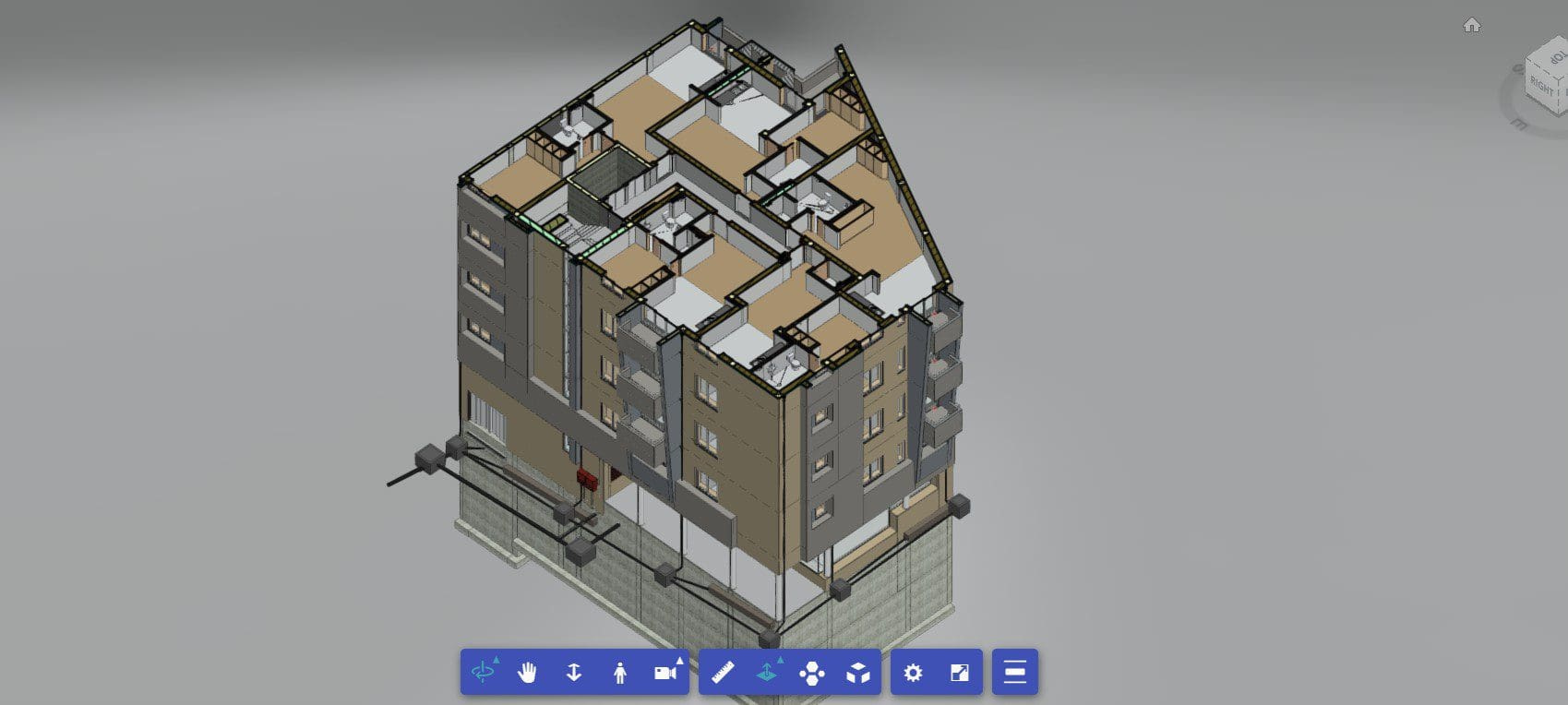Produce more, better, in less time and with fewer resources. This is a reality we face on a daily basis, regardless of our training, experience or sector of activity. Indeed, the world has changed! The economic situation of world markets, the increasingly rapid development of new technologies and the decrease, over the last few decades, of the weekly workload are some of the decisive factors that have led companies to place the notions of productivity and quality at the forefront of their concerns. To this change, companies in the construction sector were no exceptions.
A necessary change
In an increasingly global economy associated with a clear decrease in the number of construction works, companies in the sector are faced with a constant increase in competition. Completing increasingly complex works, at ever-faster speeds and at ever-lower costs, has become a decisive factor in increasing competitiveness.
In order to achieve this objective, and in light of the current situation, companies linked to the construction sector must be able to improve several aspects, essential to their survival.
On the one hand, they must be able to make an even more accurate estimate of the costs and resources required for the construction of each work, in order to reduce the risk associated with projects and constant budget overruns. On the other hand, they must be able to effectively and globally analyze the different specialty projects in order to identify, as far in advance as possible, not only the elements likely to reduce costs and optimize production, but also the various project errors that may lead to a delay in the delivery of the work. Since the execution and coordination of projects are complex and time-consuming tasks, the appearance of unforeseen events and incompatibilities during the construction phase, however small they may be, can quickly have a strong impact on the schedule and budget, as poor coordination or quantification of materials and labor can absorb up to 30% of construction costs.
The use of BIM software, by allowing the efficient management and coordination of the various information relating to each project, makes it possible to considerably increase the effectiveness of companies in the construction sector and, consequently, their competitiveness.
From model to design visualization
In the traditional method, the tasks related to the production of two- or three-dimensional documents are, as a rule, shared among the various project stakeholders or collaborators. Plans, sections, elevations or other drawn pieces are thus treated in two dimensions, in parallel with which a three-dimensional model, or part of it, is often created from scratch, aimed at extracting more communicative documents such as renderings or animations. Since all documents produced are treated as independent elements, the rigor, accuracy and agreement of these elements depends on a single factor: good communication between the various stakeholders.
Unfortunately, and despite the efforts made by everyone involved, the frequent lack of time combined with the diversity of actors – which varies depending on the size of the project – often becomes an obstacle to good communication, compromising not only the integrity of the project but also its realization.
With the use of this traditional methodology, any change in the project becomes a complex and time-consuming task. The information must be transmitted to all those involved who, in turn, must change all the elements manually, thus consuming resources unnecessarily.
At ndBIM, we believe that the adoption of new technologies – more precisely BIM software – and, of course, of new work methodologies, allows us to considerably reduce the time dedicated to preparing documents and consequently increase the time dedicated to the project, that is, to the development of the idea to be built.

The use of BIM software – citing, as an example, ArchiCAD, developed by the Graphisoft group – allows the creation of three-dimensional models, which correspond to a faithful virtual representation of the project to be built.
These three-dimensional models are composed of parametric elements, interconnected with each other, which can be fed or changed simultaneously by all employees of the same project, regardless of their functions. All project information is now concentrated in a single model, accessible by all stakeholders, thus facilitating communication between the different teams.
In BIM models, the various elements as well as the connections they establish with the remaining components are automatically updated whenever a change is made by one of the intervening parties. These three-dimensional elements are directly related to each other, which means that a simple change in shape, position, texture or any other parameter assigned to it, has a direct influence on all elements of the model, thus guaranteeing a rigorous representation of the reality to be built.
Unlike the traditional method, with the use of BIM software, making a change to the project – even if it is still only built virtually – becomes an easy and automated task. Changing the project also means automatically changing all plans, sections, elevations, etc., as this powerful tool offers the possibility of extracting rigorous two-dimensional drawings from the virtual model and this, at any stage of project development. To this end, the considerable amount of data present in these models must obviously be filtered and published in formats adapted to each participant in the project.
In short, a BIM model, as long as it is up to date, allows, in a few minutes, the production of any designed piece that represents the exact state of the project at the precise moment it is published.

In addition to the possibility of visualizing and presenting the project using two-dimensional elements powered by the ArchiCAD tool, the use of a BIM model also offers the functionality of creating three-dimensional views of the project, perfectly faithful not only to the reality to be built, but also to its two-dimensional representations, since these are combined in a single tool.

The development of three-dimensional representations plays an essential role in some design phases. In early stages, these representations can acquire a key role to stand out from your competitors. The ideas presented to the clients are clear and innovative, allowing them to accelerate the understanding not only of the project but also of the work. With the use of BIM, both the study and the proposal of alternative design and construction solutions are facilitated, whether for economic or technical reasons. In more advanced stages, these representations can also be used to clearly present the strategy, methods and construction process: the client adheres to the ideas presented with complete confidence, since they are the rigorous representation of reality even before starting the work.
In short, with the change in work methodology and the adoption of new BIM tools, tasks related to the production of two- and three-dimensional documents – which consume important resources – are automated and move into the background. The direction of the different players becomes the same and everyone collaborates with a single objective – to create a virtual model that represents the exact reality to be built.
From the model to the coordination of specialties
We mentioned earlier how difficult collaboration and communication between the different actors involved in the construction of a project can be. We will now focus our attention on the difficulties and problems arising from the coordination of the different projects, produced by all these actors, that is, from the coordination of the different specialties.
Constructing a building is undoubtedly a complex operation. Companies capable of more efficiently coordinating the large flows of information from the various stakeholders and, consequently, anticipating errors and incompatibilities in the work, are also the companies that have the greatest probability of delivering a given work within the established deadlines and budget.

It is a fact, the more advanced the project is, the more the cost derived from resolving design problems increases.
In project phases, the communication of errors and incompatibilities is most of the time irrelevant, not having, in general, a great impact on cost or deadlines.
In case the project is already in the construction phase, the appearance of errors or incompatibilities can be disastrous in the completion of the work, since the time elapsed between the conclusion of the project and the start of the work can sometimes be very long. The teams that created the projects may already be involved in other projects or even, in some cases, be working in other companies. Therefore, the investment made in the analysis and correction of the project can be extremely high.

Thanks to the use of BIM technologies, associated with the know-how of some specialists, models from different specialties can, from a very early stage, be combined in a single database and verified by automated processes. Errors, omissions or conflicts between different specialties are detected virtually and, consequently, resolved even before starting the licensing and construction phases, thus reducing the risk of budget overruns.

From model to quantity take-off
Finally, we will address one of the many advantages of using BIM models – the quantities take-off.
In the traditional method, the calculation of the quantities of materials for budgeting corresponds to a manual process, long, exhaustive and above all subject to human error. It is often carried out by subcontracted companies – which represent an added cost – or by teams external to those involved in the design of the project, which on the one hand analyze and understand the project and, on the other hand, calculate the quantities of resources needed to build each project. With the use of BIM models, associated with the potential of software such as Vico Office, developed by Trimble, this process is automated, facilitated, accelerated and, above all, more rigorous.
In fact, and since the BIM model is a faithful representation of the real building to be built, it is possible to extract from it all the resources, namely materials needed at each stage of the project. Material delivery planning tasks are made easier and orders can be placed with greater precision.
To this end, the various construction elements are grouped according to their type and data relating to their design are associated with them (resources, labor, productivities, etc.).

Studies carried out by several companies in pilot works reveal that the quantities extracted from the BIM models are extremely reliable provided, obviously, there is an effective methodology for controlling the quality of the model.
Automating the exhaustive process of calculating quantities allows you to make estimates sooner and more frequently, evaluating and comparing, with greater ease, the implications of each project alternative in the total cost of the work.
Finally, and since we have already listed some of the advantages provided by BIM – such as the elimination of incompatibilities, the optimization of the constructive solution, the elimination of errors and omissions and, of course, the extraction of drawings that are automatically updated – we will choose, by way of conclusion, to address those who may benefit most from the adoption of these new methodologies.
If you are a Work Owner, it will allow you not only to have a better project and a more effective development planning, but also to mitigate the risk of your investment. ndBIM, through its project team and its partners, is looking forward to working with you in the design of your developments.
On the other hand, if you are a Builder and don't receive projects in BIM models, don't worry! ndBIM can be your partner in converting two-dimensional elements into very high quality BIM models that will serve as a basis, not only for your budget but also for temporal and economic planning.

